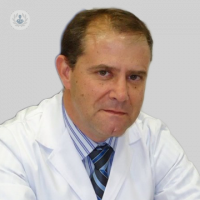Advances in the treatment of lithiasis Genitourinary
Written by:Urolithiasis is characterized by the formation of stones that manifest with severe pain. At present the treatment is varied thanks to technological innovation, with endoscopic surgery and urethral calculi of the most used techniques.
Gallstone disease: what is
Urolithiasis is a disease characterized by the formation of stones in the urinary tract (Figure 1). It appears in 5-10% of the general population and usually appears as a picture of intense pain in the dorsal region that radiates to the genital area (renal colic). The pain is so intense that often causes the onset of nausea and vomiting accompanying. However, it is bleeding when urinating or urinary tract infections occur with some frequency. In many cases, the detection of a kidney stone occurs accidentally, by ultrasound for other reasons.Its incidence seems to increase in relation to increasing the socio-economic level. Thus, it is eight times more common disease among medical professionals, lawyers, etc.. in other activities. We can say that 6% of the population will have a calculation throughout his life.The first episode usually appears between the 3rd and 4th decade of life. After that, the likelihood of recurrence is 50% in the next 5 years, this percentage increases in cases with gallstone family history.
Then in Figure 1, you can see a kidney stone "staghorn", named for their appearance.

Diagnosis of renal calculi
The diagnosis of nephrolithiasis must include a full morphological and functional assessment of the urinary tract. It should confirm the presence of urinary calculi and its impact at that time. To do this we use basically the plain abdominal radiography (Figure 2), abdominal ultrasound and contrast study of the urinary tract by computed tomography (CT). The latter, without contrast is currently the technique of choice for diagnosis. Stone size, position and possible obstruction that occur on the kidney determine the best treatment options.The following image (Figure 2) a visible staghorn calculi right kidney is shown in an X-ray:

Once deleted calculations should be made a metabolic study by the expert in Urology to rule out any disorder that may involve the reappearance of the same. This study, often forgotten, is simple and convenient for the patient and, in some cases, will be the cornerstone of long-term treatment.
Treatment of renal calculi
The main purpose of medical treatment of stone disease is to eliminate existing calculations, avoiding or future complications stemming from its growth, and prevent their recurrence.Many of urinary calculi will be expelled spontaneously. But very often it has to resort to active treatment. It is in this area where there have been major changes in recent years, resulting from the miniaturization of instruments used and the incorporation of energy sources such as laser high efficiency.Traditionally it has been used to open surgery for the treatment of large kidney stones. However, from the 70s of the last century the percutaneous approach is generalized (with metal tubes 10 mm maximum diameter inserted into the kidney from the lumbar region) and external energy sources appear (ESWL). Both techniques, widely employed today, have allowed a minimally invasive and highly effective treatment; especially lithotripsy it changed as few techniques how to handle the stones by urologists.In the last 10 years there has been a new revolution in the management of urinary calculi, hand technological innovation. Laser sources can be applied in points diameters up to one third of a millimeter with high energies as 30 watts or higher. This has enabled miniaturized instruments work and reach the kidney itself from the urethra (using therefore the natural orifices) with the intention of fragmenting and pulverizing calculations up to 3 cm in diameter, unthinkable situation a few years ago only. Similarly, it has facilitated access to kidney stones located in places that were previously only accessible from the outside (eg caliceal diverticula).Endoscopic surgery, which is generically as we call this kind of techniques, has gained considerably in efficiency, allowing successful treatment with a minimally invasive, fewer complications and faster recoveries.Ureterolithiasis is currently well treated by ureteroscopy, minimally invasive procedure through natural pathways (urethra and ureter). The location and size of the calculation will define the need for rigid or flexible ureteroscopy.
Necessary care after treatment of renal calculi
Once eliminated or existing calculations will be necessary to treat the initial cause of the problem (gout, hyperparathyroidism, etc.). If biochemical disorders or other extrarenal manifestations of disease that could favor the formation of gallstones are discovered, we will need a conservative, medical and dietary treatment, if appropriate.Overall we follow these guidelines:1) fluid intake:Increase fluid intake is a nutritional modification universally applicable to all types of calculations. You should get a urine volume of 2 liters per day. For an individual of middle age with normal activity, this implies an intake of 3 liters. Water will be the fundamental contribution, but only explicitly advise against milk and tea.2) Dietary restrictions:Reducing salt in the diet or low protein intake with virtually constant are the recommendations given to people with genitourinary litiasis. However, these measures will be used improperly ineffective, in the best. This type of treatment should not be initiated without prior consultation perform in urology metabolic study.3) Medical treatment:Medical treatment, aimed at preventing the formation of new calculations, should be adapted to each type of calculation and underlying metabolic disorder if it exists.
Edited by Patricia Crespo Pujante



